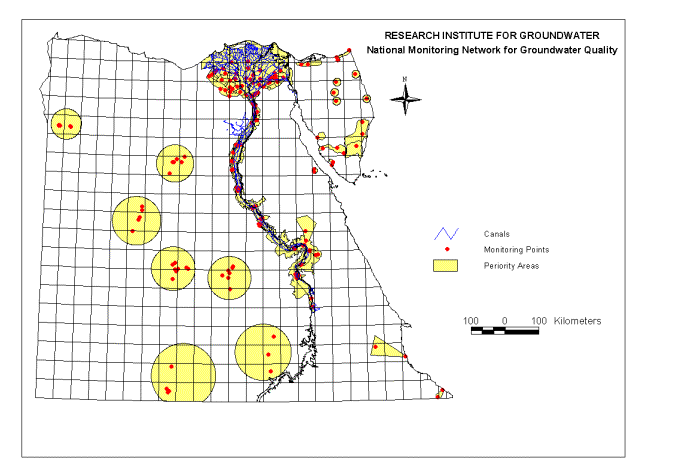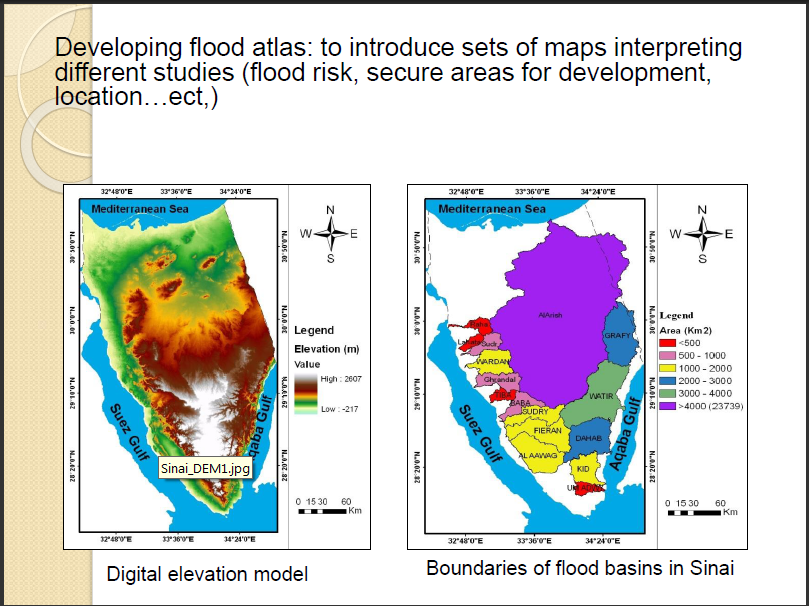
A Ph.D Degree on a thesis entitled "An Integrated Framework for Coastal Modeling and Artificial Intelligence Techniques"
Eng. Mohamed Tharwat, Coastal Research Institute (CoRI) (affiliate to the National Water Research Center-NWRC), has earned his Ph.D. degree for the thesis entitled "An Integrated Framework for Coastal Modeling and Artificial Intelligence Techniques". Fishing harbors play a significant role in the Egyptian economy. Thus, new fisheries harbors are required to be constructed to accommodate the increasing seaborne trade traffic. Fishing harbors sites are complex dynamic interface zones involving the mixing of economic and environmental activities problems. In today's environmentally conscious world, a fishing harbor needs to be planned, designed, and managed in harmony with both the environmental and economic aspects. For this reason, Integrated Coastal Structures Management (ICSM) is required by means of reliable, understandable, and timely knowledge of processes affecting coastal structures for helping both decision-makers and local communities to make the right decision about the optimal forms, design, and management for these structures. Moreover, during the planning phase of coastal structures, it is important to collect necessary information about the existing properties of suggested sites. This information comprises of complete investigation of the neighborhood including depths of water, nature of the harbor, the probability of environmental issues such as sedimentation, the frequency of coastal processes such as tides, the direction of waves, etc. Traditional approaches such as topo-bathymetric surveys and physical models are required for collecting data useful for the study of morphological evolution for the proposed sites, but those approaches are time-consuming and costly, thereby resulting in difficulty in monitoring coastal dynamics at a large scale. To overcome these problems, the use of up-to-date and comprehensive scientific management models is considered to support harbor design management. Thus, this study presents a framework for ICSM to develop the current methods used for the conceptual design management of harbors. Accordingly, on the basis of sophisticated methodologies encompassing remotely satellite images relying mainly on the coupling between the Artificial Intelligence (AI) classifier technique and Geographic Information System (GIS), this study initially offered a highly reliable tool of a decision-support for evaluating the coastal changes and extraction of shoreline positions. On the other hand, sedimentation is one of the most common environmental problems affecting the management of harbor's entrance as it reduces the navigation depth and inhibits the passage of vessels, therefore costly dredging activities are necessary to maintain the required depths. Hence, a better understanding of this complex phenomenon is crucial to improve coastal structures' planning and management aiming at reducing economic and environmental impacts. In recognition of this, a calibrated two-dimensional numerical coastal model system (CMS) is set up using the extracted shoreline from satellite images and environmental boundary conditions that can serve as a numerical tool for solving the harbor's entrance sedimentation problems. This is done through investigating different scenarios of the harbor's layout and identify the main parameters of associated breakwaters which would effectively mitigate the sedimentation issues inside the harbor basin. Based on the numerical simulation database of the resulted sedimentation quantities, AI models such as Support Vector Machines (SVMs), Gaussian process regression (GPR), and Neural Networks (ANNs) are developed to predict the sedimentation volume due to numerous scenarios of harbors layout and breakwaters characteristics. In addition, the developed AI model is linked to the Genetic Algorithms (GA) model to minimize sedimentation during the design phase of harbors. Ultimately, the methodologies used in this research are able to properly introduce a range of non-conventional approaches that would improve the coastal, environmental, and economic aspects of coastal structures. Furthermore, those approaches can be straightforwardly applied for other projects, with different environmental and geometrical characteristics. A research paper on this thesis is available on the following link: https://bit.ly/2FSMay4

